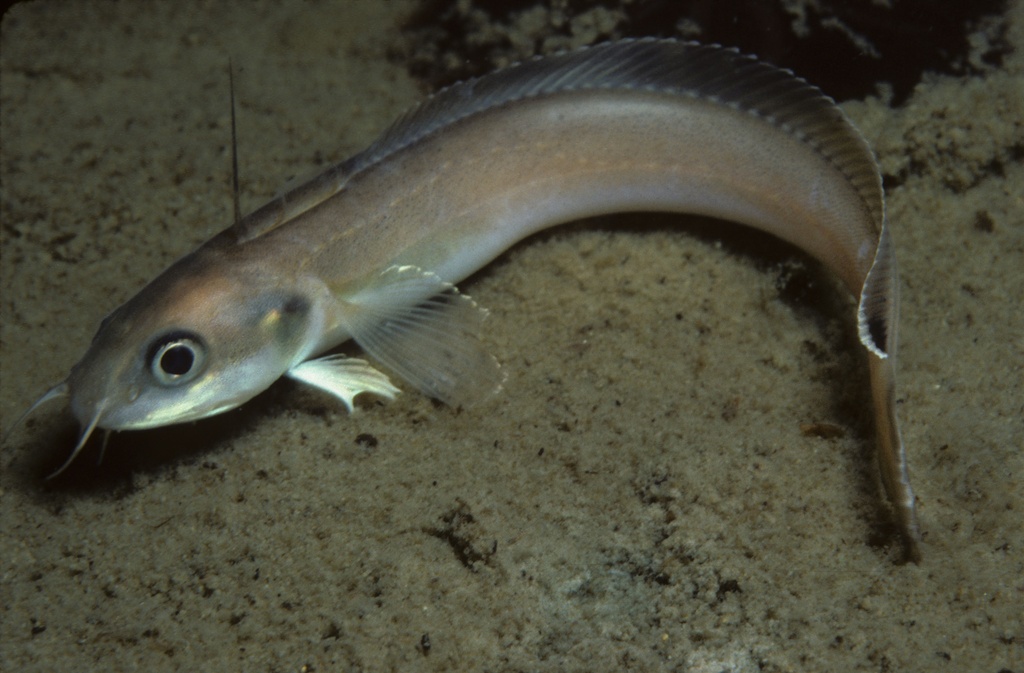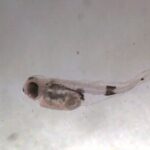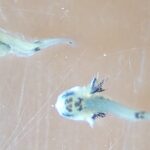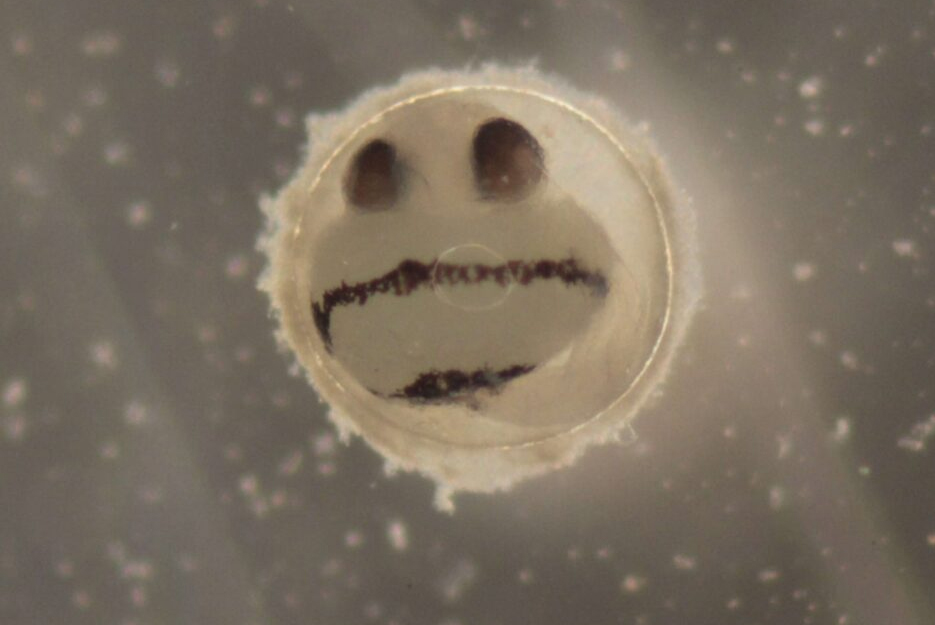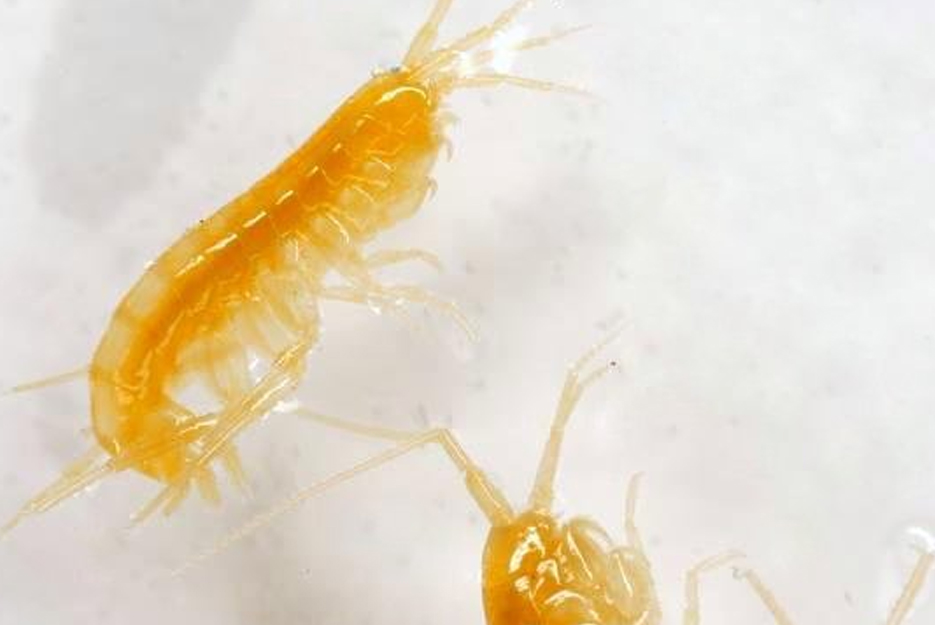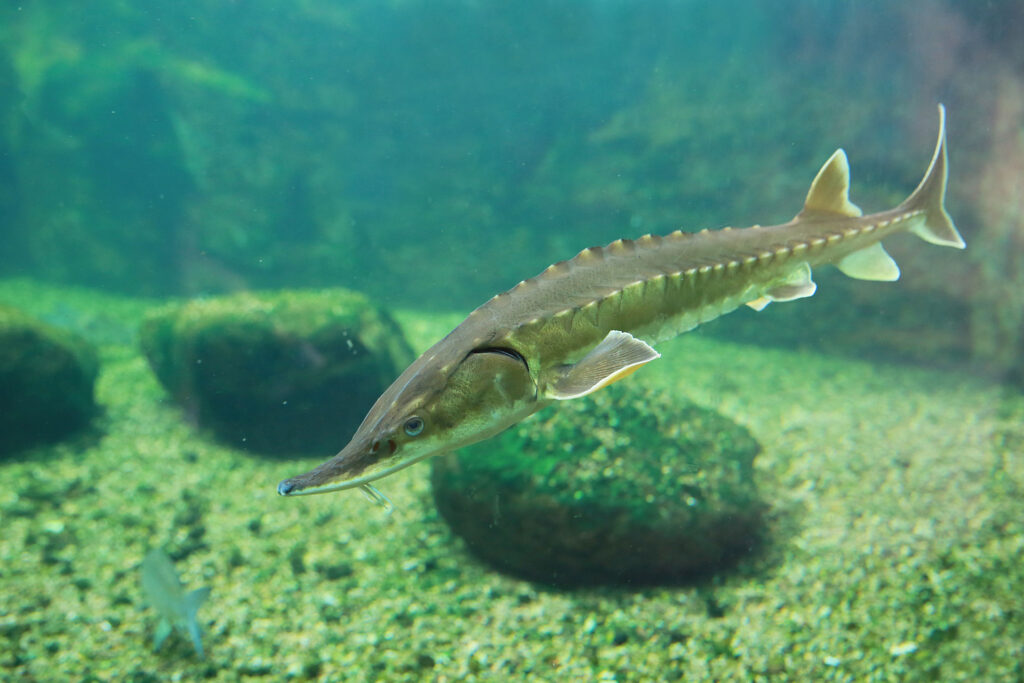This Featured Fish is one most people probably haven’t heard of, but it’s a familiar fish here in the Bedford Ichthyoplankton Lab—the Fourbeard Rockling! Found in both the Eastern and Western Atlantic, the Fourbeard Rockling (Enchelyopus cimbrius) is commonplace in our New England marine samples. They’re slender bottom dwellers that live on soft bottom habitats (not rocks, despite the name) and feed on various invertebrates. Like another bottom-dwelling fish we’ve featured (the Striped Cusk-eel [Ophidion marginatum]), their pelvic fins sit way up in the front of their bodies behind the head, and the pectoral fins are behind them. This is not a big deal when you’re a fish, but it’s kind of like having your legs before your arms. This species only grows to about 8–12 inches long, so they’re not a popular food fish, and they are currently of Least Concern species status. (It helps when you’re not a fish that gets fished!)
The Fourbeard Rockling doesn’t really have any beards (let alone four); it’s named for its barbels (the word “barbel” being derived from the Latin word barbula, or “little beard”). A barbel is a fleshy structure some species of fish grow near their mouths. Catfish whiskers are barbels, and, like cat’s whiskers, barbels are sensory structures. Mammalian whiskers are modified hairs that serve to perceive touch and vibration. Barbels can do that, but barbels also have taste buds! They’re mostly found in bottom-dwelling fish (again, like catfish) and fish that live in murky or low-light water, and they help the fish find food as its probing along the bottom. If you can’t see what you’re looking at, it’s handy to be able to taste things before you put them in your mouth! The Fourbeard Rockling has one barbel on its chin, one on the tip of its snout, and a pair in front of its nostrils. (Fun fact: on the European side of the Atlantic, there is also a Fivebeard Rockling and a Three-bearded Rockling!)
Rocklings look like they have one dorsal fin on their back, but there’s really two. The first one is pretty weird: It has a single tall ray (in the lab we lovingly and unofficially call this a head-bobbin) followed by a fringe of about fifty very short little rays with no fin membrane that sit in a groove. These are called vibratile rays because they undulate to move water through them; it turns out they also serve a sensory function! Researchers found millions of receptor cells on the vibratile rays of a related species (the Shore Rockling [Gaidropsarus mediterraneus]), and studies of other members of the family found that this special fin has both tactile (touch) and chemosensory (chemical) abilities, which means they can also taste with their fins! So, this ordinary-looking little fish is actually a specialized sensory sensation!
The interesting thing is that these fun features are not what we think of in the lab when we picture a Fourbeard Rockling larva. Instead, we look to see if they lack prominent pelvic fins (they hatch without them, though they develop quickly), have a head-bobbin, or if they have (or lack) any fin rays at all. The features that are iconic in the larvae (a black band and a neat little tail dot) don’t even exist in the adult! Until they reach their juvenile stage, most fish look nothing like what they’ll grow up to be, and the Fourbeard Rockling is no exception. But to us, this nifty little fish is still exceptional!
